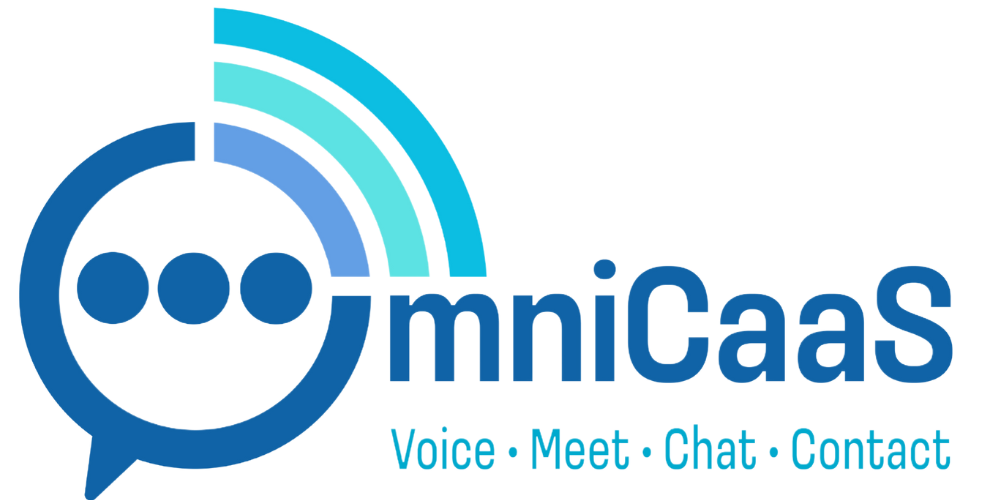
Modern businesses operate in an increasingly digital environment where effective communication and collaboration solutions are essential for success. UCaaS focuses on internal employee communication and collaboration, while CCaaS is designed for external customer interactions, such as customer service and sales.
Among these new-age solutions, Unified Communications as a Service (UCaaS) and Contact Center as a Service (CCaaS) have emerged as leading tools for streamlining internal operations and enhancing customer engagement.
But what sets these two systems apart? In this article, we’ll explore the key differences between UCaaS and CCaaS to determine the right choice for your business.
What are UCaaS and CCaaS?
Unified Communications as a Service (UCaaS) is a cloud-based communication platform designed to unify multiple communication channels—voice, video, messaging, and collaboration tools—into a single, cohesive system.
It allows businesses to seamlessly connect employees, whether they are working in the office, remotely, or across multiple locations.
UCaaS focuses on enhancing internal communication and collaboration, providing businesses with flexibility, scalability, and advanced integration capabilities.
By eliminating the need for traditional on-premises communication infrastructure, UCaaS reduces costs and simplifies management.
Benefits of UCaaS:
- Simplified communication with an all-in-one platform.
- Enhanced productivity for hybrid and remote teams.
- Scalable solutions for small businesses.
- Integration with existing productivity tools such as Microsoft Teams or Google Workspace.
Contact Center as a Service (CCaaS) is a cloud-based solution that manages customer interactions across multiple channels, such as voice, email, chat, and social media.
It gives businesses the tools to deliver exceptional customer service while streamlining contact center operations.
CCaaS platforms allow organizations to provide seamless, personalized experiences by leveraging features like AI-driven insights, support, and advanced analytics. This makes CCaaS ideal for businesses with high customer interaction volumes or those seeking to improve their customer service offerings.
Benefits of CCaaS:
- Centralized management of customer interactions.
- Enhanced customer experiences through personalized support.
- Cost-effective scalability for growing customer demands.
- Powerful analytics for informed decision-making.
What are the Core Features of UCaaS?
UCaaS is designed to simplify communication and collaboration within an organization. Key features include:
- Voice and Video Communication:
High-quality VoIP calls and video conferencing ensure teams stay connected no matter where they are.
- Instant Messaging:
Real-time messaging capabilities foster quick and efficient communication among team members.
- File Sharing and Collaboration:
Shared workspaces and document editing tools enhance team productivity.
- Device Flexibility:
Access to the platform across desktops, smartphones, and tablets ensures seamless usability.
- Third-Party Integrations:
Compatibility with tools like CRM software and project management platforms boosts efficiency.
What are the Core Features of CCaaS?

CCaaS solutions prioritize customer interaction management and aim to deliver exceptional customer experiences.
- Interactive Voice Response (IVR):
Automates call routing to connect customers to the right agent or department.
- Omnichannel Support:
Ensures consistent customer service across voice, email, chat, and social media.
- Analytics and Reporting:
Tracks customer behavior and measures agent performance to improve service quality.
- AI-Powered Tools:
Features like chatbots, sentiment analysis, and predictive analytics enhance efficiency and personalization.
- CRM Integration:
Seamlessly connects with customer relationship management platforms for a 360-degree view of customer data.
UCaaS vs. CCaaS: Core differences
Choosing between UCaaS and CCaaS, or deciding whether your organization needs both, is not just a technology decision. It’s a strategic move that affects productivity, customer satisfaction, and long-term ROI.
| Feature | UCaaS (Unified Communications as a Service) | CCaaS (Contact Center as a Service) |
| Primary Purpose | Streamline internal business communication and collaboration | Manage and optimize customer service and support operations |
| Target Users | General business employees and internal teams | Customer service agents, sales reps, and support teams |
| Communication Channels | Voice, video, messaging, presence, email, file sharing | Voice, live chat, email, social media, SMS |
| Focus | Internal collaboration and productivity | External customer engagement and satisfaction |
| Typical Features | VoIP calling, video conferencing, instant messaging, team chat | Call routing, IVR, queue management, CRM integration |
| User Experience | Unified platform for employee interaction | Omnichannel platform for customer communication |
| Integration | Calendar, productivity apps (e.g., Microsoft 365, Google Workspace) | CRM, helpdesk, AI chatbots, ticketing systems |
| Analytics & Reporting | Basic usage and performance stats | Advanced customer service metrics and KPIs |
| Scalability | Easily scalable for remote and hybrid workforces | Scalable based on call volume and customer service needs |
| AI Capabilities | Voice assistants, transcription, meeting summaries | Chatbots, sentiment analysis, automated workflows |
| Business Outcome | Enhanced team collaboration and operational efficiency | Improved customer experience and service efficiency |
Key Differences in Target Audience
UCaaS and CCaaS are tailored to distinct audiences, each addressing specific operational needs.
Designed for businesses that prioritize internal communication and collaboration, UCaaS is ideal for companies with hybrid or remote teams. It is commonly adopted by organizations across industries, including technology, education, and professional services, where efficient internal communication is a priority.
CCaaS, on the other hand, is geared toward businesses that manage high volumes of customer interactions. It is particularly valuable for organizations focused on delivering exceptional customer service, such as contact centers, retail businesses, healthcare providers, and financial institutions.
Communication Tools: UCaaS vs. CCaaS
UCaaS emphasizes tools that enhance internal collaboration, such as video conferencing, messaging, and document sharing. These features are designed to improve teamwork and efficiency within the organization.
CCaaS focuses on tools for managing external customer interactions. With features like IVR systems, chatbots, and omnichannel communication, CCaaS solutions are purpose-built to improve customer engagement and satisfaction.
Scalability
Both UCaaS and CCaaS are highly scalable, but their scalability is designed for different needs:
- UCaaS solutions grow alongside your workforce, making them ideal for businesses that need to add users or expand communication capabilities as they scale.
- CCaaS solutions are built to handle increasing volumes of customer interactions, offering the ability to add agents, channels, and support features as customer demands grow.
Deployment and Integration
Deployment and integration are key considerations when selecting between UCaaS and CCaaS, as these factors impact the ease of implementation, adaptability, and long-term usability.
While both UCaaS and CCaaS aim for seamless cloud integration, the deployment complexity often depends on the organization’s specific needs.
UCaaS platforms focus on seamless integration with tools that enhance internal communication and productivity. These systems are designed to integrate effortlessly with collaboration tools like Microsoft Teams, Google Workspace, and project management software such as Slack or Asana.
CCaaS platforms are often embedded with CRM systems. Allowing agents to access customer data in real-time during interactions. CCaaS solutions also support omnichannel communication, ensuring customers can reach businesses through their preferred channels.
Use Cases for UCaaS
UCaaS is ideal for:
- Remote Work: Supporting geographically distributed teams with seamless communication.
- Team Collaboration: Enhancing productivity through unified tools for messaging, voice, and video.
- Growing Businesses: Offering scalable solutions that adapt to the organization’s size and needs.
Use Cases for CCaaS
CCaaS shines in:
- Customer Support Centers: Streamlining high volumes of customer interactions with IVR and omnichannel tools.
- Sales Teams: Helping manage leads and customer relationships effectively.
- Customer-Focused Industries: Improving service quality in industries such as retail, healthcare, and finance.
Collaboration Capabilities
UCaaS excels in fostering team collaboration by offering tools like shared workspaces, document editing, and group messaging.
In contrast, CCaaS focuses on collaboration between customer service agents and customers, emphasizing quick resolutions and personalized support.
Security Features
While the emphasis may differ, both systems offer reliable cybersecurity measures to protect users and their information.
UCaaS platforms prioritize the security of internal communications. Features such as end-to-end encryption, secure voice and video conferencing, and multi-factor authentication (MFA) ensure that sensitive business discussions remain private.
CCaaS platforms focus on securing customer interactions. This includes encrypting data transmitted during calls, chats, and emails, as well as safeguarding customer information stored in CRM integrations.
Advanced fraud detection and prevention tools, such as anomaly detection and biometric authentication, are common features in CCaaS solutions.
Both UCaaS and CCaaS platforms share some foundational security features as well, such as data encryption and firewalls.
UCaaS vs. CCaaS: How to do ROI analysis
1. Identify the Cost Structure
Start by calculating the Total Cost of Ownership (TCO) for each solution. This includes:
UCaaS Costs:
- Monthly subscription per user
- Migration and onboarding costs
- Equipment (headsets, VoIP phones if needed)
CCaaS Costs:
- Licenses
- Telephony and IVR setup
- CRM integration
- AI/automation tools (chatbots, call routing, sentiment analysis)
- Training and management tools
2. Estimate Tangible Benefits
ROI is ultimately about understanding what returns (in time, money, or resources) you can expect compared to what you put in. Here are some common benefits to measure:
UCaaS Tangible Benefits:
- Lower telephony costs through cloud-based VoIP
- Reduced travel and meeting expenses via video conferencing
- Improved productivity due to faster collaboration and fewer delays
- IT resource savings, thanks to cloud-based updates and reduced maintenance
CCaaS Tangible Benefits:
Higher first-call resolution rates
- Lower customer churn with faster, omnichannel support
- Increased sales conversion through intelligent call routing
- Operational cost savings by automating repetitive tasks (IVR/chatbots)
- Improved agent performance with real-time analytics
3. Consider Intangible Returns
Some of the most valuable benefits are harder to quantify, but no less important:
- UCaaS: Improved work culture, reduced employee burnout, enhanced cross-department collaboration.
- CCaaS: Brand loyalty, better customer reviews, and enhanced reputation due to superior support.
Making a Strategic Choice: UCaaS or CCaaS?
Making a strategic investment in UCaaS or CCaaS requires more than comparing features. It’s about aligning the technology with your business goals, operations, and growth strategy.
You first need to define your primary business goal.
If internal communication and collaboration are your focus, then UCaaS is the optimal choice.
On the other hand, if managing customer interactions and improving service quality is your goal, then CCaaS is the way to go.
Secondly, consider the size of your business. Mid to large enterprises often benefit from combining UCaaS for internal collaboration and CCaaS for customer engagement. However, UCaaS delivers high collaboration value at a low cost for startups and small teams.
Conclusion
Conclusively, UCaaS and CCaaS are both transformative tools that cater to distinct business needs.
By understanding the unique features and applications of each, businesses can make informed decisions to meet their communication and collaboration goals.
Connect with the experts at OmniCaaS to make an informed decision.


Post a Comment